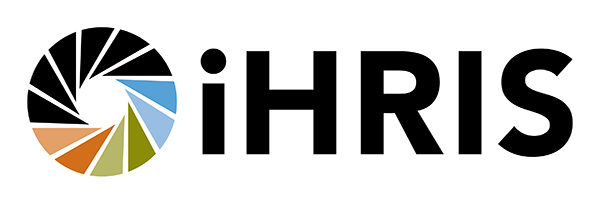iHRIS - A Year of Development
We know that most ‘Year in Review’ articles are published in January, coinciding with the new calendar year, but the year that’s been consuming our thoughts just ended. CapacityPlus’s second fiscal year wrapped up in June and, since we've been concentrating on iHRIS development over the last year for our year-end reporting, we thought we'd post a summary of our accomplishments.
Following the ‘release early, release often’ philosophy that encourages user feedback, we published eleven new releases of our iHRIS Qualify and iHRIS Manage software. We added new capabilities focused on improving the usability of the software, expanding translation support, enhancing our reporting module for data analysis and use, and, of course, fixing bugs.
New modules and features related to health workforce management advanced the software from tracking health workers to integrating routine HR functionalities for better day-to-day management of health workers. Additional developments enable the iHRIS software to more easily integrate with other health information systems, such as DHIS2 (a district health management information system) and OpenMRS (a medical record systems), to allow for the aggregation of health workforce data with health delivery information and disease statistics.
With better translation support, the languages included in the last release (version 4.0.16) included Dutch, Estonian, French, German, Italian, Portuguese, Brazilian Portuguese, Spanish, Swahili, and Tagalog.
We also announced a major release candidate to the global iHRIS community for review, testing, and feedback, which is anticipated for release in September and will improve security and accessibility of the software.
Here are some highlights of each release:
Version 4.0.6, released in August 2010, introduced several new modules and the ability to archive reports for future comparison. It also included enhanced support for the World Health Organization’s data exchange standard, SDMX-HD, a means for sharing health workforce data in iHRIS with other health information systems. New modules included:
- A Next of Kin module to track additional health worker contact information
- An Establishment Module in iHRIS Manage to track budgeted positions and/or staffing norms
- A Scanned Paper Records Module to archive paper forms and letters generated and distributed when health workers are confirmed, promoted, or transferred
- A Confirmation/Probationary Work Period module to track and document when a health worker is confirmed.
This release also included the ability to upload meeting notes for position changes and interviews.
Version 4.0.7, released in September 2010, addressed miscellaneous reported bugs.
Version 4.0.8, released in November 2010, included improvements to the Report module and to dropdown menu displays of standardized lists, as well as miscellaneous bug fixes. Other enhancements included:
- A new Record Status Module, which was requested from users in Botswana, to assist with data quality audits and tracking which records need review or have missing data
- Additional fields to capture multiple exam results in the iHRIS Manage Training Module.
Version 4.0.9, released in December 2010, further improved reporting functionality, adding the ability to ‘pivot’ on reports, which prompts users viewing a report to link to other relevant reports in the system, and the ability to merge reports together. This version also made translation of the software into other languages easier through Translatewiki, a site that facilitates a large community of volunteer translators. New features in this version will help administrators and users ensure consistent data quality -- the standard validation and behavior of several fields that capture information on health workers’ identification, language proficiency, and position codes were modified and there is now an easier method to add custom data validation.
Version 4.0.10, released in December 2010, addressed a minor bug.
Version 4.0.11, released in March 2011, introduced new data management tools for cleansing data, an important step for aggregating data into meaningful reports. The new tools include a safe way to delete data and the ability to share standardized data lists across multiple iHRIS installations. Also, with this release, printed and archived reports display any limits applied to reports. In addition, the reporting interface was improved.
Version 4.0.12, also released in March 2011, marked a significant step forward with the introduction of a new Debian packaging system that eases the installation and upgrade process, and reduces the ICT burden. Now most of the installation process is automated, and administrators are simply asked to enter the system password. Administrators are also notified when iHRIS updates are available.
Version 4.0.13, released in April 2011, included speed improvements for reporting, as well as some minor enhancements and bug fixes.
Version 4.0.14, released in May 2011, included a module for producing standardized letters and forms based on OpenOffice documents.
Version 4.0.15, also released in May 2011, included updates to the Debian packaging system introduced in 4.0.12, as well as miscellaneous bug fixes.
Version 4.0.16, released in June 2011, included several new features and enhancements to improve the usability and data quality of the software, including:
- A new checkbox display for entering data and selecting multiple form entries
- An easier way to limit report views
- Steps to avoid duplicate entry of forms
- Improved error messaging.
Finally, our Version 4.1 release candidate added enhanced database security to enable:
- Self-Service: HR managers and system administrators will be able to allow health workers to view the details of their own records and to submit changes
- Geographic- and facility-based HR Staff controls: HR managers and system administrators will be able to associate an iHRIS user with a facility, ward, district, or region. Then the user will have the ability to modify the personnel records for employees within that location, while protecting personnel records from employees that should not have access. This functionality greatly enhances the use of iHRIS in a decentralized environment where facilities and districts maintain and use their own data, while still permitting aggregation and management of data at the central level.
